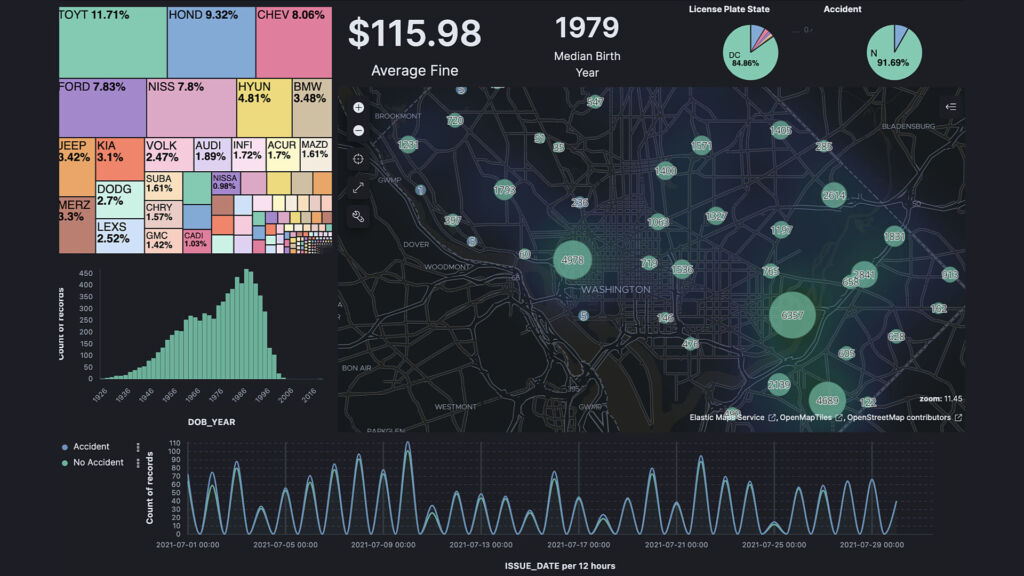fraud prevention for the telecom sector with observability
The telecommunications industry is one of the most dynamic and rapidly evolving sectors, with an increasing reliance on sophisticated technologies and complex systems. However, as the industry advances, it also faces new challenges, particularly in the realm of fraud. Fraudulent activities, such as subscription fraud, identity theft, and account takeover, can cause significant financial losses and damage the reputation of telecom companies. To combat these threats, telecom operators have to turn to observability tools as powerful allies in their fraud prevention efforts. In this article, we will explore how observability enforces fraud prevention for the telecom sector, providing real-time insights, and bolstering security measures.

WHAT IS OBSERVABILITY?
Observability tools are a set of sophisticated software solutions that empower companies to gain deep insights into the performance and behavior of their systems and networks in real-time.
These tools go beyond traditional monitoring approaches by collecting vast amounts of data, analyzing it, and generating actionable insights to enhance overall operational efficiency. In the telecom sector, observability plays a pivotal role in identifying and mitigating fraud attempts proactively.

REAL-TIME DETECTION AND ALERTS
Traditional fraud detection mechanisms often rely on batch processing and retrospective analysis, which can delay the discovery of fraudulent activities and lead to substantial losses. Observability, on the other hand, offers real-time detection capabilities. By continuously monitoring various data streams, including network traffic, user behavior, and transaction patterns, these tools can swiftly identify suspicious activities and promptly raise alerts to the relevant teams.
PREDICTIVE ANALYTICS AND MACHINE LEARNING
Fraudsters are becoming increasingly sophisticated, making their activities harder to detect using conventional methods. Observability tools leverage advanced technologies like machine learning, predictive analytics, and even AI to detect anomalous patterns and anticipate potential fraud attempts.
As these tools learn from past data and evolve with emerging fraud trends, they can proactively identify new attack vectors, preventing fraudulent activities before they cause harm.
IMPROVED USER AUTHENTICATION AND SECURITY
Observability can significantly enhance user authentication processes by continuously monitoring user behavior and interactions across various channels. This behavioral analysis helps establish baselines for individual users and detect deviations from normal patterns. Suspicious activities, such as login attempts from unfamiliar locations or at unusual times, can trigger immediate security responses, such as multi-factor authentication or temporary account suspension.
(for increased protection against cyberattacks, Elk Factory recommends Elastic Security)
END-TO-END VISIBILITY
A comprehensive fraud prevention strategy requires end-to-end visibility into the entire telecom ecosystem. Elastic Observability provides a unified view of interconnected systems, applications, and user interactions, enabling telecom operators to monitor their infrastructure holistically. This heightened visibility allows for a faster response to potential threats and better collaboration between different teams to combat fraud effectively.
FRAUD PREVENTION FOR IOT DEVICES
The rapid proliferation of Internet of Things (IoT) devices has introduced new avenues for fraudsters to exploit vulnerabilities. Observability can effectively safeguard IoT networks by continuously monitoring device communications and identifying unusual activities or potential security breaches.
This proactive approach can prevent IoT devices from becoming entry points for larger-scale attacks on telecom infrastructure.
With the steady rise of connected 5G devices, this will become an increased focus for the Telecom sector.
DATA ANONYMIZATION AND PRIVACY
While observability tools collect large amounts of sensitive data to detect fraudulent activities, telecom companies must prioritize data anonymization and privacy. These tools employ encryption techniques and data masking to protect user identities and sensitive information while still providing valuable insights into fraudulent activities.
CONCLUSION
As the sector continues to evolve, fraud prevention becomes an increasingly critical aspect of safeguarding assets and maintaining customer trust. Elastic observability offers a powerful solution by providing real-time insights, predictive analytics, and end-to-end visibility. With observability, telecom operators can stay one step ahead of fraudsters, detect and prevent fraudulent activities promptly, and secure their networks and customer data effectively. Embracing observability in the telecom sector is not just a best practice but a strategic imperative for staying competitive and resilient in an ever-evolving threat landscape.
Contact us



